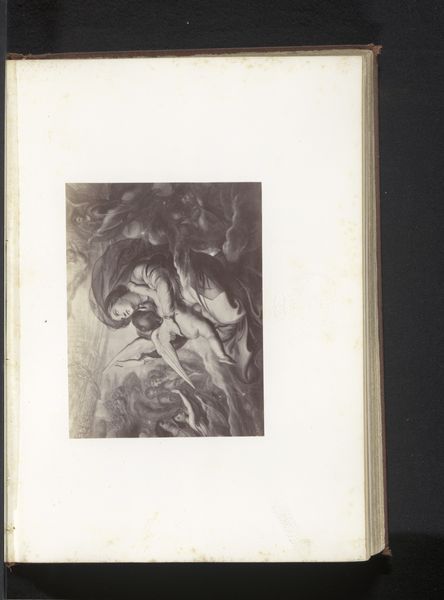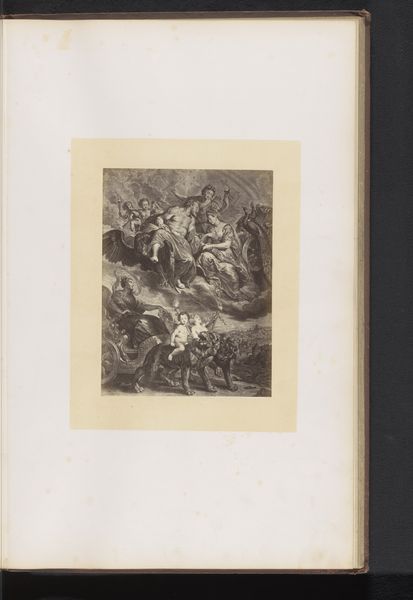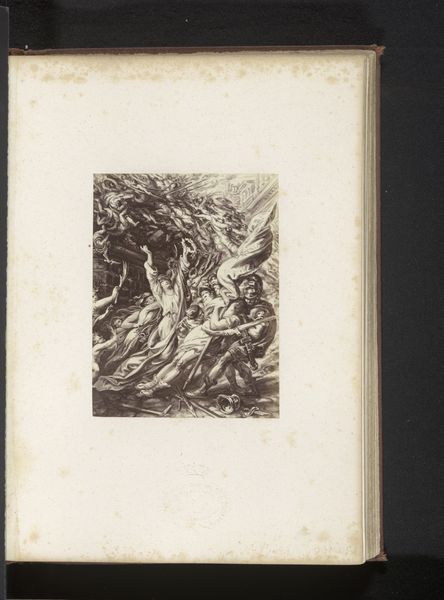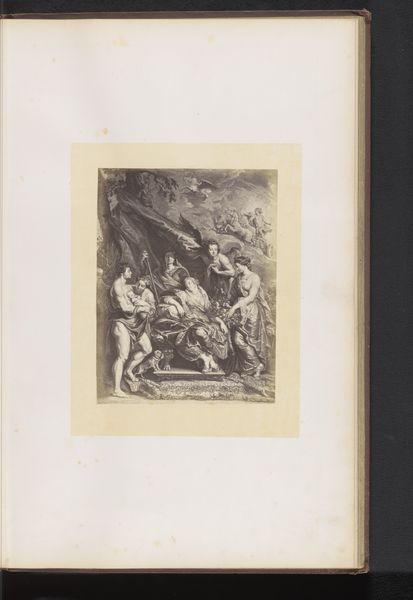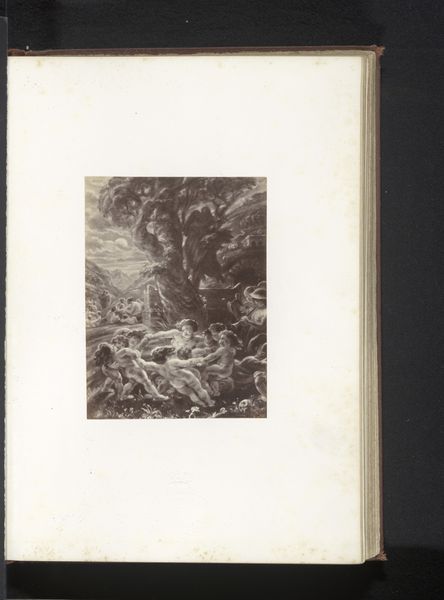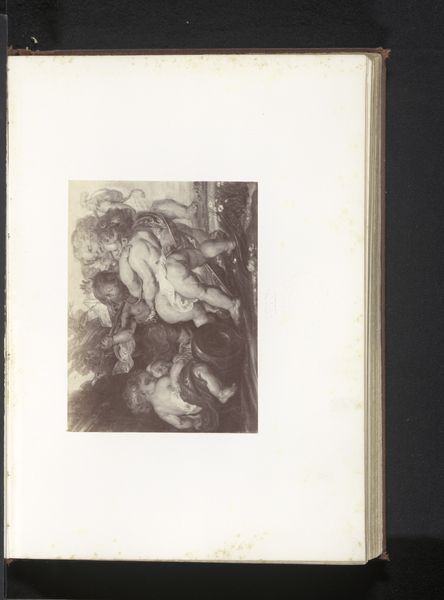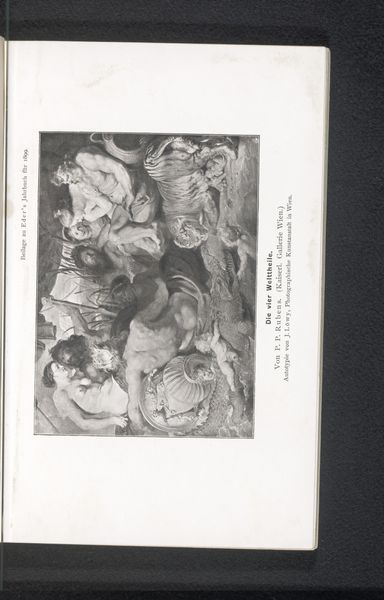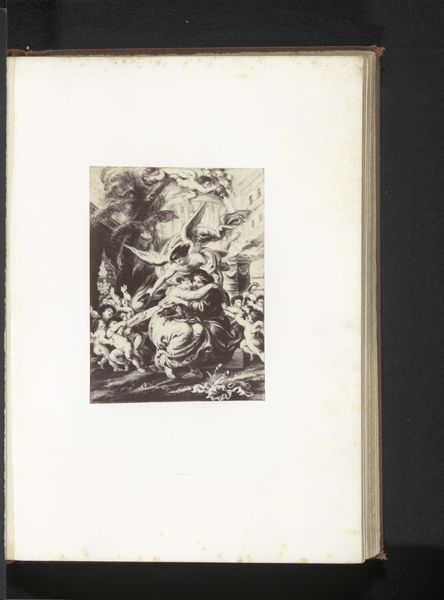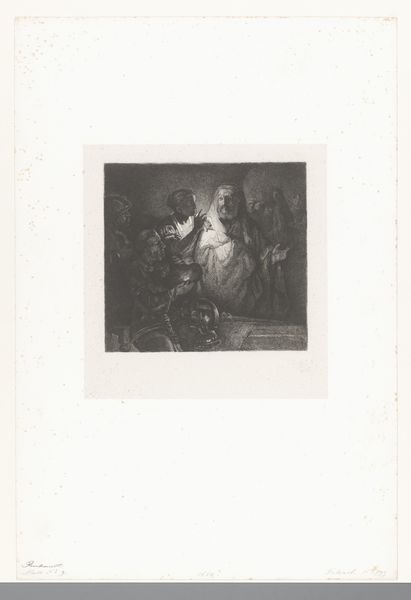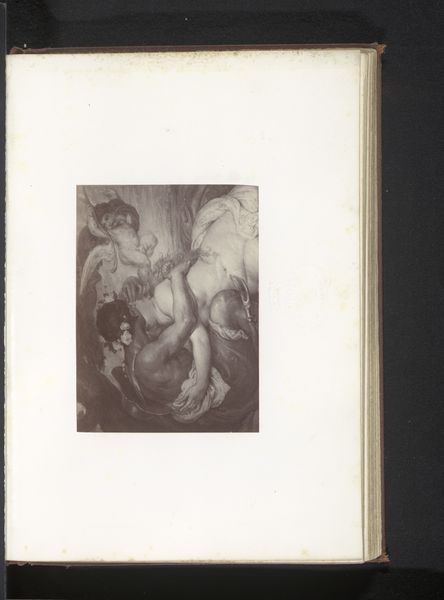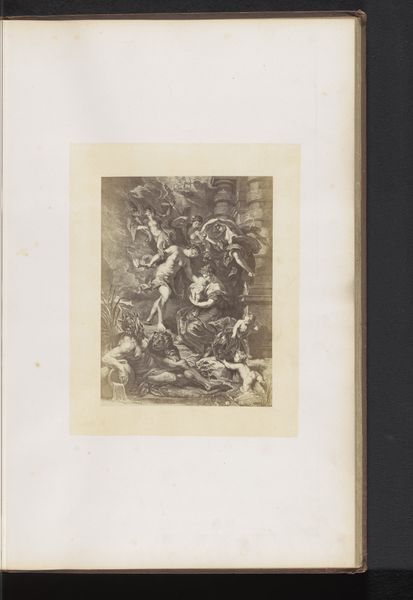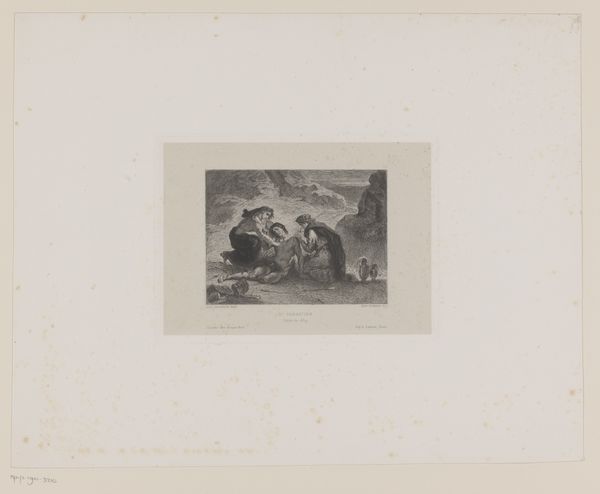
Dimensions: height 200 mm, width 172 mm
Copyright: Rijks Museum: Open Domain
Editor: Here we have "Reproductie van L'Evanouissement d'Amfitrite", or "Reproduction of the Fainting of Amphitrite", a print made before 1873 by Gabriel Blaise, an engraving that looks like a moment of mythological drama rendered with desaturated colors. What strikes you when you look at it? Curator: The swooning female figure immediately grabs my attention, but I see it as more than just classical drama. In its time, such imagery, drawn from mythology and the female nude, often reinforced certain societal expectations around gender. How do you think depictions like this functioned in relation to women's roles in 19th-century European culture? Editor: That's interesting! I hadn't really considered it in that light. I guess it does portray women as passive and needing rescue... Were these images purely about controlling perceptions, or could there be something more? Curator: That’s a crucial question. The academic art style suggests a deliberate attempt to create ideals. But where did those ideals come from? Often they're rooted in the anxieties and power structures of the time. What does the artist leave out? Whose perspective is centered? Exploring those absences can be very telling. Editor: So, by examining what's missing or emphasized, we can better understand the power dynamics at play. It makes you realize that art isn't just a pretty picture, but a reflection of cultural values. Curator: Precisely. And those cultural values are constantly evolving, prompting us to revisit and re-evaluate how we see these images today. Seeing art as active rather than passive. Editor: I'll definitely carry that perspective with me. Thanks!
Comments
No comments
Be the first to comment and join the conversation on the ultimate creative platform.

